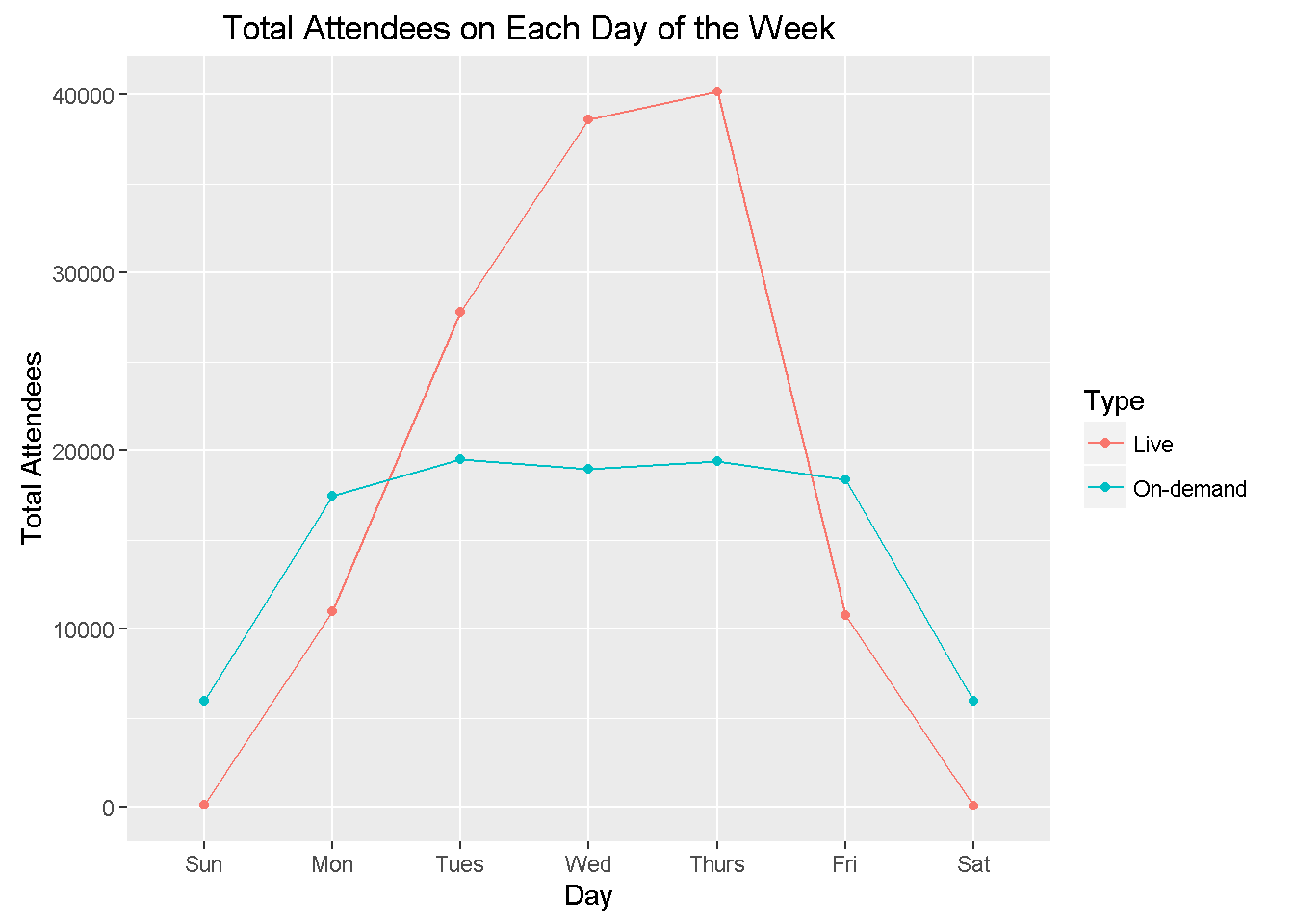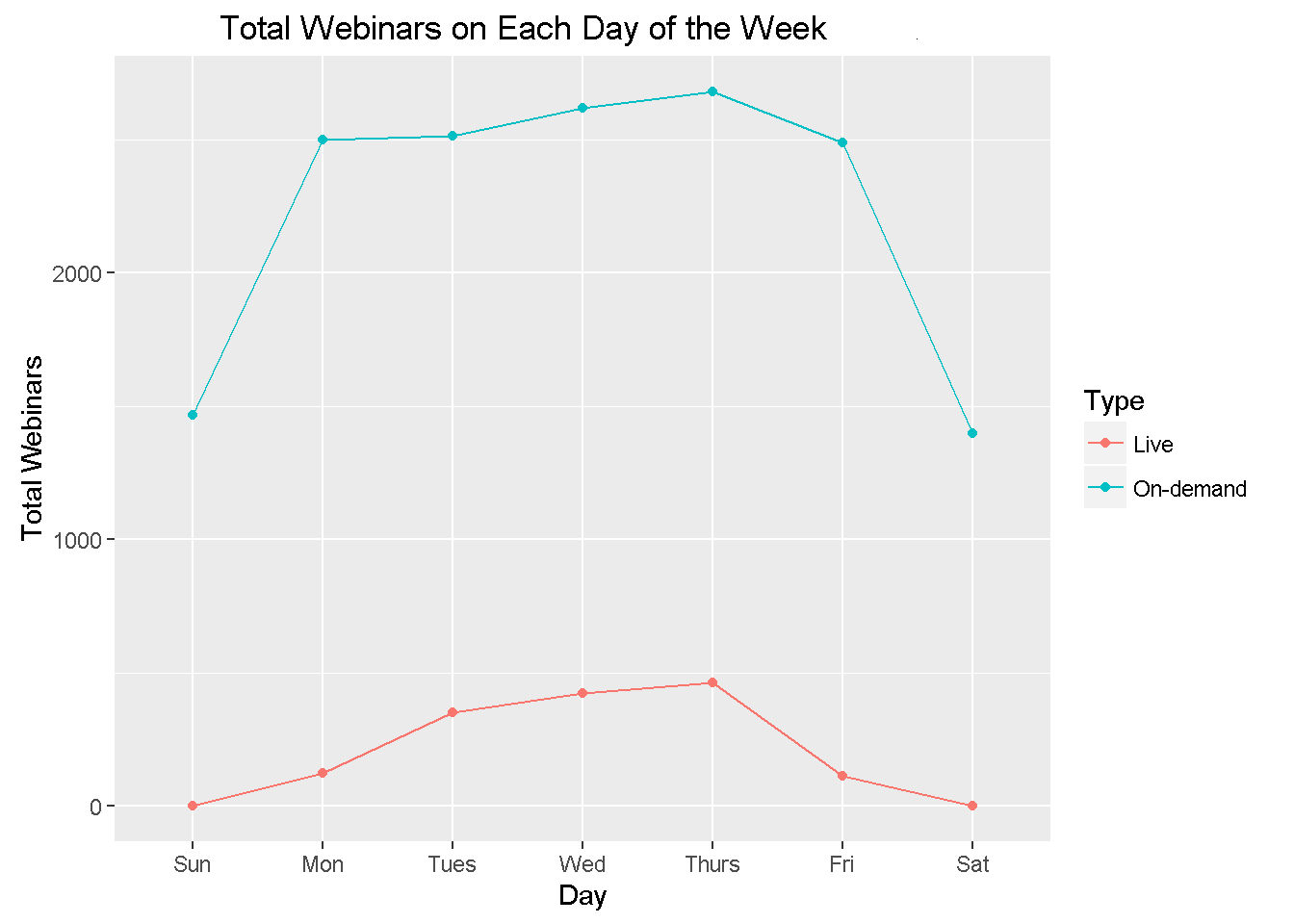When it comes to planning and running webinars, there are a lot of things to consider and questions to ask yourself. How long should it be? What format should it be presented in - webcam, PowerPoint, both?
While the aforementioned questions are important, it’s also essential to consider what is the best day and time to run your webinar. There is a lot of 'traditional' thinking around this i.e. run your webinar on Thursdays at 2pm or Tuesdays at 11am.
But is this way of thinking actually correct? Are weekends really off-limits when it comes to running webinars? Does the data back any of this up?
Well, let's take a look.
What are the Best Days for Webinars?
Online event organizers tend to schedule webinars on one of three days:
- Tuesday
- Wednesday
- Thursday
For our purposes, let’s call them the “Big Three”. Why do people favour these days? There are actually a few reasons for this.
We like to think of Mondays as the day people are busy, settling back into work from the weekend or perhaps catching up from an unproductive Friday. With emails to slog through and a workload to catch up on, marketers tend to believe people won't want to attend a webinar on a Monday.
And Fridays? Well, Fridays are very much considered to be a winding down day, where people are already thinking about the weekend and less likely to attend a content-heavy presentation.
And with the rise of flexible working hours, more people are condensing their working week, so there are actually fewer people around on Fridays.
The question is, are these assumptions actually correct? When actually is the best time to host a webinar?
Scheduling On Alternative Days
WorkCast's own research about the total webinar attendees on each day of the week suggests something very interesting:

Though there is a significant gap in viewing numbers between the Big Three and the other days during the week for live events, there isn't really much difference in the figures for on-demand.
From Monday to Friday the total attendee figure hovers just below 20,000, and there is relatively little difference between each day when it comes to the number of people who viewed presentations.
So, this suggests that on-demand events don’t need to be scheduled on specific days of the week.
Why? For one, people can view on-demand webinars when they choose, and perhaps they actually have more time to view events on days such as Monday and Friday.
Picture it, as you’re winding down on Friday once all you’ve ticked off all your weekly tasks and answered all those emails. A thought pops into your head, that webinar you couldn’t attend might still be available to view on-demand.
As you’ve finished all your work for the week, you’ve got a spare hour or so to view it later this afternoon.
Similarly, on Monday, you arrive at the office in the morning with a full inbox and several calls to make. A webinar you’ve registered to view is due to start at 10am. You simply don’t have the time to attend the live showing. However, a little later in the afternoon, you could view it, on-demand, after you’ve worked through your backlog of tasks.
Scenarios like this are probably pretty common. Therefore, it seems that Mondays and Fridays are just as effective at gaining high attendance figures, conversion rates and meaningful leads.
Now we’ve established that events can be scheduled on other days of the week, what about weekends?
Webinars on Weekends?
Believe it or not, there is an audience there.
From our research we saw that over 18% of on-demand viewers for events were from either Saturdays and Sundays.
On-demand webinars certainly do have an audience - perhaps people wanting to quickly view a few minutes of an event at their leisure, while not wanting to view the event in its entirety.

What we can take away from this is that conversion rates for those who view on weekends (and Mondays and Fridays) are likely to be higher.
This is because those who take the time to view on days not usually associated with viewing work-related webinar content are likely to be more serious about the subjects discussed.
So What?
Overall, it's clear that scheduling events on the Big Three days produces the highest live event audience numbers.
However, on-demand figures show that there is relatively little difference in the audience figures throughout the week.
Sometimes in the sea of events being run on those days, it can become a little crowded, and your event might get lost in the shuffle, so to speak.
Scheduling an event on Mondays and Fridays could make your event stand out a little more from others taking place (but the real advantage comes from on-demand viewing on these days, so take into account where the majority of your views are coming from).
Conclusion
Don't be afraid of hosting your webinars on Mondays and Fridays. You don't have to limit your events to the Big Three. If you create engaging content and make it available across the week, there will be an audience for it.
Learn more about using WorkCast to create engaging business webinars.
Share this
You May Also Like
These Related Stories

How Long Should a Webinar Be? The Optimal Webinar Length



